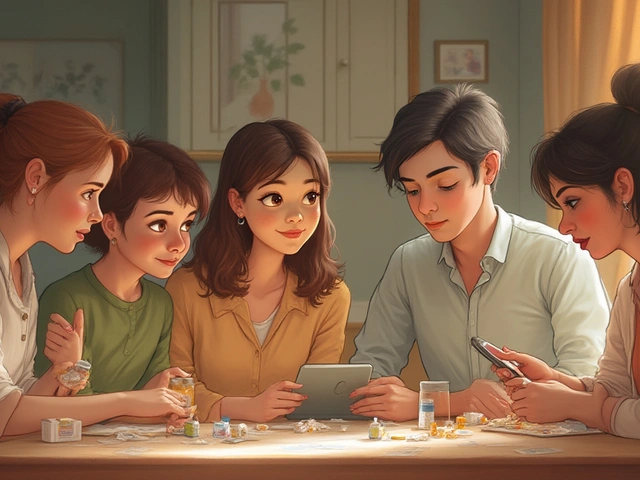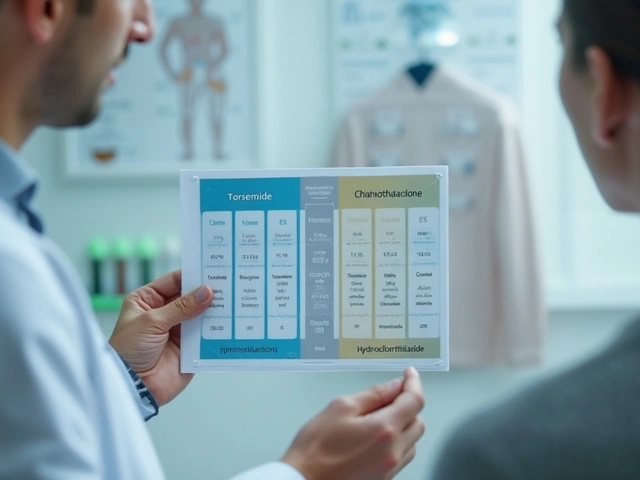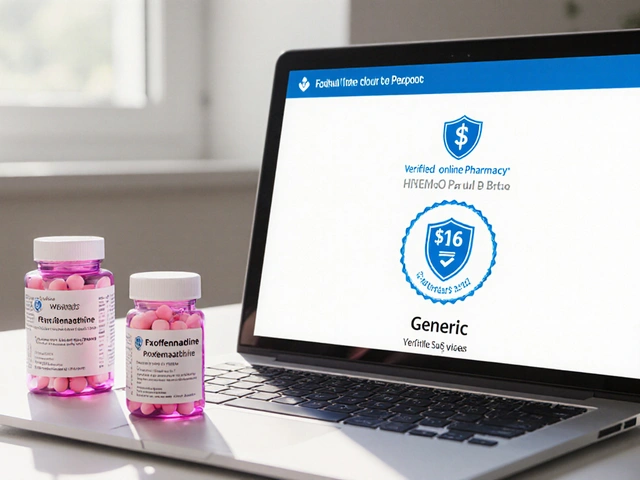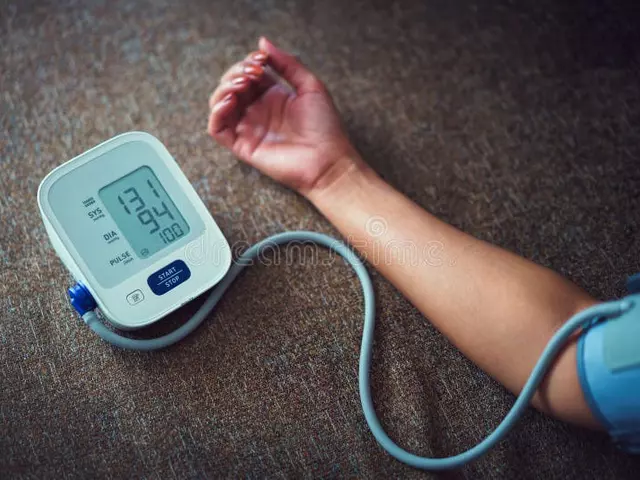
When you hear your medicine has been recalled, your first thought might be to toss it in the trash or stop taking it right away. But that’s exactly what you shouldn’t do. Medication recalls are more common than most people realize - over 4,800 happened in 2022 alone - and the right response can mean the difference between staying safe and putting yourself at risk.
Don’t Panic, But Don’t Ignore It Either
Most recalls aren’t emergencies. In fact, about 70% of them are precautionary. That means the drug might have a labeling error, a tiny bit of contamination, or a packaging issue - not necessarily something that will hurt you right away. But that doesn’t mean you can wait. The FDA classifies recalls into three levels, and only Class I recalls involve a real risk of serious harm or death. Even then, the solution isn’t to quit your medicine cold turkey.Check Your Lot Number - Not Just the Name
Here’s where most people get it wrong. You can’t just look at the brand name or generic name and assume your bottle is affected. A recall only applies to specific lots. That’s why you need to find the lot number on your bottle or box. It’s usually a mix of letters and numbers, sometimes near the expiration date. If you don’t see it, check the blister pack or the original box.Compare that lot number to the one listed in the FDA recall notice. If it matches, you’ve got a problem. If it doesn’t, you’re fine. Don’t guess. Don’t assume. This step alone cuts your risk in half.
Call Your Pharmacy First - Not Your Doctor
Your pharmacy already knows about the recall. Pharmacists are trained to handle this. They get real-time alerts from the FDA and have systems in place to match your prescription to recalled lots. Call them. Don’t wait. Don’t email. Call.Most pharmacies have a 24- to 48-hour turnaround for replacing recalled meds with safe ones from another batch or manufacturer. They can also tell you if your drug is part of a larger recall affecting multiple brands. And if you’re on a blood pressure med like valsartan or a diabetes drug like metformin - two of the most commonly recalled categories - your pharmacist might already have a replacement ready.
Never Stop Your Medicine Without Talking to Someone
This is the biggest mistake patients make. In a 2022 FDA survey, 22% of people stopped taking their recalled meds right away. For someone on high blood pressure, diabetes, or seizure medication, that’s dangerous. Stopping suddenly can cause rebound effects - spikes in blood pressure, seizures, or even heart attacks.The FDA’s official advice is clear: “Continue taking your medication until you’ve spoken with your doctor or pharmacist.” Your health doesn’t pause for a recall. Your treatment plan doesn’t pause either. The goal isn’t to stop the medicine - it’s to swap it for a safe version.
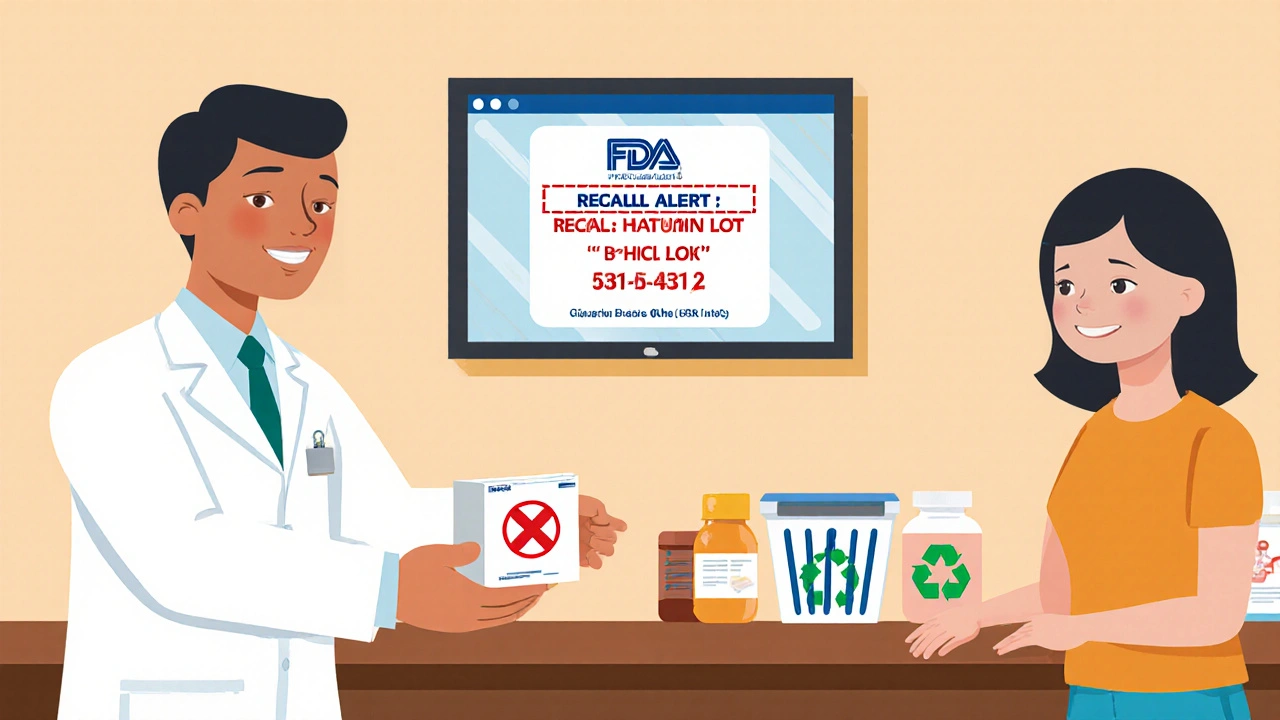
Dispose of Recalled Meds the Right Way
If your pharmacist tells you to throw the medicine away, don’t just toss it in the trash or flush it down the toilet. That’s how drugs end up in water supplies and landfills. The FDA recommends mixing pills with something unappetizing - like used coffee grounds, cat litter, or dirt - then sealing them in a plastic bag before tossing. This keeps kids and pets from getting into them.If you’re unsure how to dispose of it, ask your pharmacist. Some pharmacies offer take-back bins. Some cities have drug disposal days. Don’t guess. Ask.
Watch for Symptoms - And Track Everything
Even if you’ve switched to a safe version, keep an eye on how you feel. If you notice new symptoms - dizziness, nausea, rash, chest pain, or anything unusual - write it down. Note the date, time, and what you took. Then call your doctor.The FDA’s Adverse Event Reporting System (FAERS) got over 1.2 million reports in 2022. About 8% of those were tied to recalled drugs. That means people who paid attention and reported symptoms helped catch problems before they got worse. Your report could help someone else.
How to Find Out About Recalls - Fast
You don’t have to wait for a letter or a phone call. The FDA updates its recall list daily. Here’s how to check:- Go to fda.gov/safety/recalls
- Search by your drug’s brand or generic name
- Use the “Product Type” filter to narrow results
- Click the recall notice to see exact lot numbers and reasons
You can also sign up for the FDA’s RSS feed or email alerts. About 45% of healthcare pros use them. Why shouldn’t you? It takes two minutes to subscribe.
Keep a Medication Log - It Saves Time
Only 18% of patients keep a written or digital log of their prescriptions - including lot numbers and expiration dates. But those who do? They resolve recall issues 60% faster. That’s not magic. It’s preparation.Use a notes app, a spreadsheet, or even a small notebook. Write down:
- Drug name (brand and generic)
- Dosage
- Prescribing doctor
- Pharmacy name
- Lot number
- Expiration date
When a recall hits, you don’t need to dig through your medicine cabinet. You just check your list.
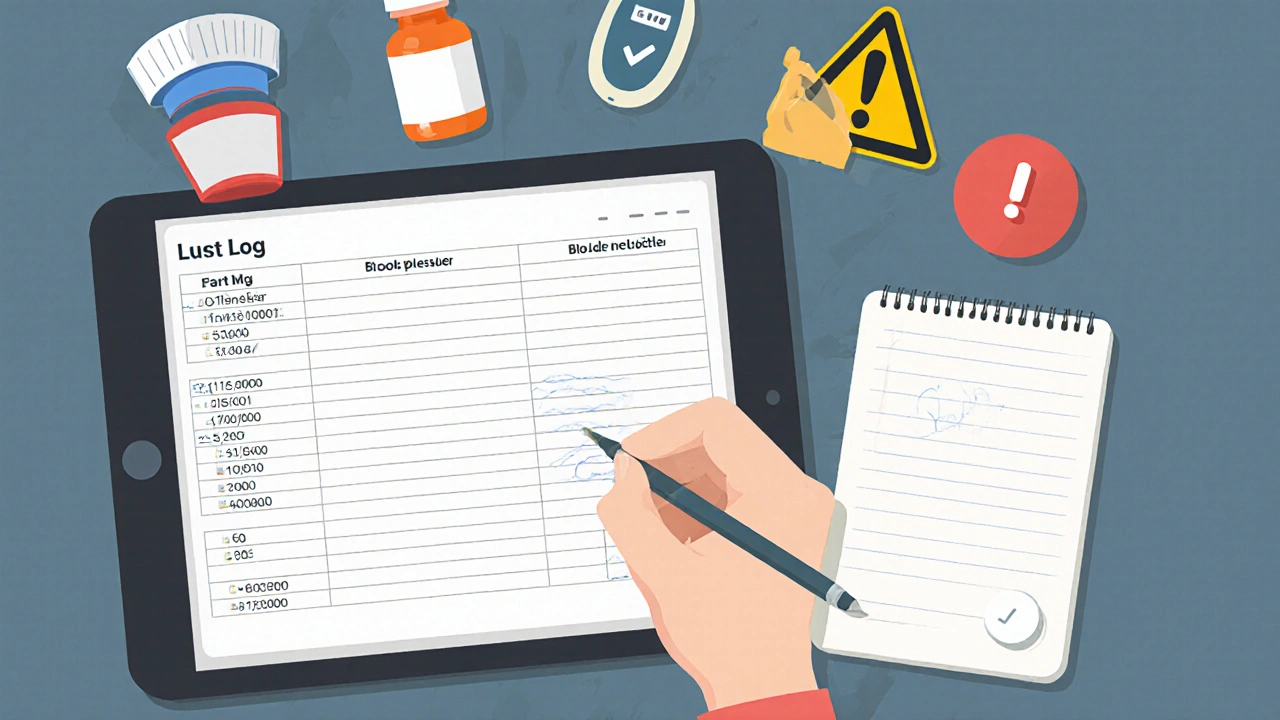
What Gets Recalled Most Often?
Not all drugs are equal when it comes to recalls. In 2022, the top three categories were:- Blood pressure meds (especially ARBs like valsartan) - 18% of Class I recalls
- Diabetes drugs (like metformin) - 15%
- Cancer treatments - 12%
Most of these recalls came from manufacturing flaws - not because the drug doesn’t work, but because something went wrong in the factory. Contamination, labeling errors, or inconsistent potency. The drug itself isn’t broken. The batch is.
What Patients Get Wrong - And How to Avoid It
Here are the top three mistakes - and how to dodge them:- Stopping meds too soon - Always consult a pharmacist or doctor first.
- Ignoring lot numbers - Only 55% of patients check them. That’s why so many panic over the wrong bottle.
- Flushing or trashing meds - 30% do this. It’s unsafe and illegal in many places.
The FDA’s 2023 patient campaign focused on these exact issues. Their message? “Don’t stop. Don’t guess. Don’t flush.”
What Happens After a Recall?
Once a recall is issued, the FDA tracks the response. For Class I recalls - the most serious - 98% of hospitals and pharmacies clear the product from shelves within 10 business days if they’re organized. If they’re not? It can take 30 days or more. That’s why your pharmacy’s quick response matters.The FDA is also improving how recalls reach patients. New pilot programs now send alerts directly through pharmacy benefit managers - the systems that handle your insurance. Early results show patients respond 35% faster when they get the notice via text or email instead of waiting for a letter.
You’re Not Alone - But You Are Responsible
Medication recalls aren’t going away. In fact, they’re rising - up 12% from 2021 to 2022. But you have more control than you think. You don’t need to be a pharmacist. You don’t need to memorize FDA codes. You just need to know three things:- Check your lot number
- Call your pharmacy before you stop taking anything
- Keep a simple log of your meds
That’s it. That’s how you stay safe. That’s how you protect your health - without panic, without guesswork, without risk.
What should I do if I’m taking a recalled medication?
Don’t stop taking it. Call your pharmacy immediately. They’ll check your lot number and tell you if your specific bottle is affected. If it is, they’ll give you a safe replacement - usually within 24 to 48 hours. Only stop your medicine if your pharmacist or doctor tells you to.
Are all lots of a recalled drug dangerous?
No. Recalls only apply to specific lots with manufacturing or labeling issues. Most bottles on the shelf are fine. Always check the lot number on your bottle against the FDA’s recall notice. Don’t assume your entire prescription is affected.
Can I just throw away a recalled drug?
No. Flushing or tossing it in the trash can harm the environment and risk exposure to children or pets. Mix pills with coffee grounds or cat litter, seal them in a plastic bag, then throw them away. Ask your pharmacist if your pharmacy has a take-back program.
How do I know if my drug was recalled?
Check the FDA’s official recall website at fda.gov/safety/recalls. Search by your drug’s name, then look for your lot number. You can also sign up for FDA email alerts. Your pharmacy should notify you too - but don’t wait for them. Check yourself.
Why do so many recalls happen with blood pressure and diabetes meds?
These are high-volume drugs made by many manufacturers, often in large batches. Small errors in production - like contamination or inconsistent potency - affect more people. That’s why they show up often in recalls. But it doesn’t mean the drugs themselves are unsafe - just that the batch you have might be.
Should I be worried if my drug was recalled?
Only if it’s a Class I recall - and even then, the risk is usually low if you act fast. About 95% of recalls are Class II or III - meaning they’re unlikely to cause serious harm. The key is to act calmly: check your lot, call your pharmacy, and follow their instructions.
Can I get a refund if my medication was recalled?
Yes. Most pharmacies will replace the recalled medication at no cost. If you paid out-of-pocket, ask about reimbursement. Your insurance may also cover the replacement. The manufacturer is responsible for the recall, not you.
What if I already stopped taking my medicine?
Call your doctor or pharmacist right away. Stopping certain meds - like those for blood pressure, seizures, or heart conditions - can cause serious side effects. They’ll help you restart safely or switch to a replacement. Don’t wait.

